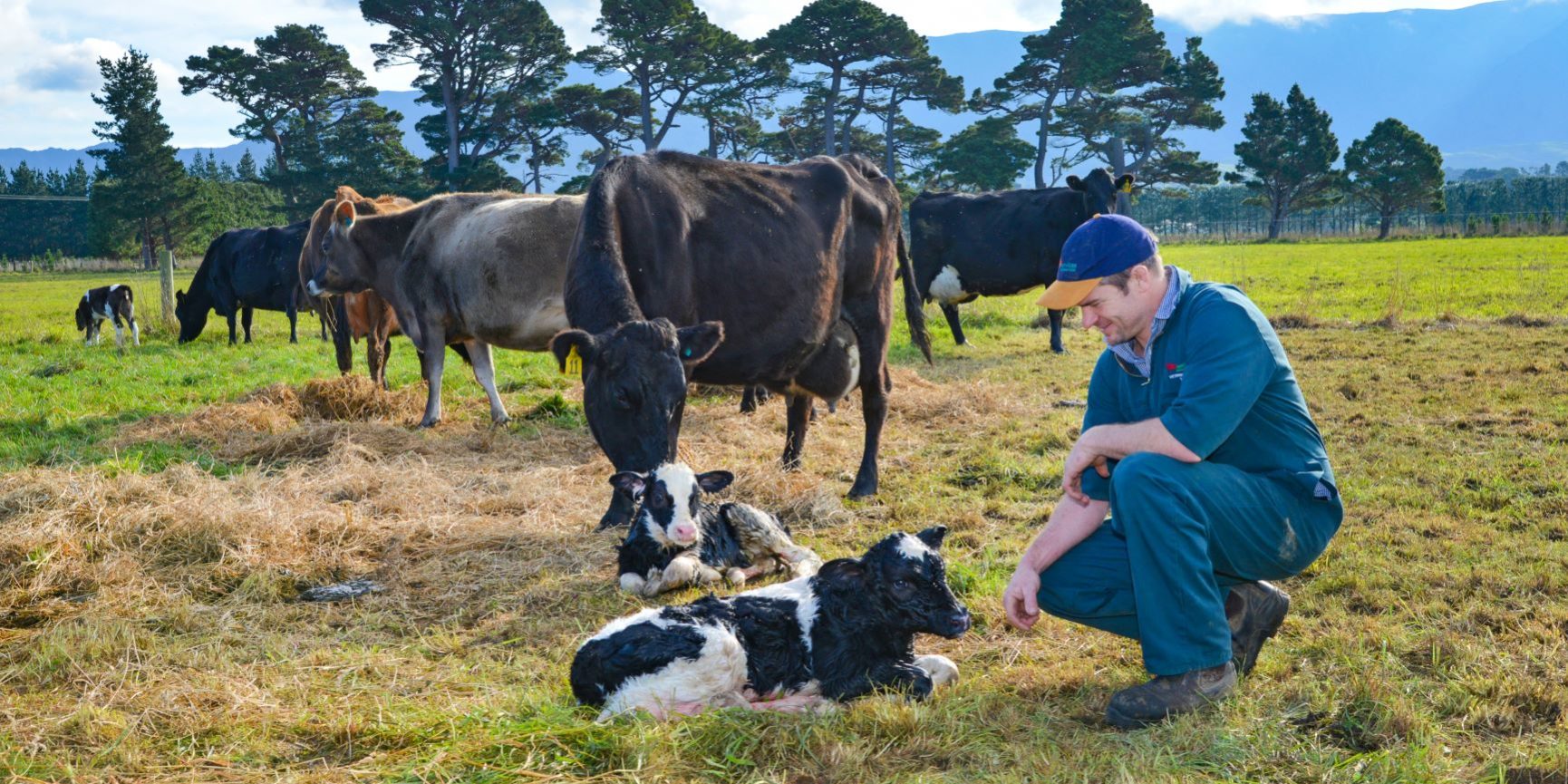There are three stages to calving:
- Stage 1 (should take around 6 hours): The fluid sac around the calf is visualised and bursts, the cow may have her tail up, be restless and isolate herself, may mother other calves, cervix gradually dilates
- Stage 2 (should take about 1 hour): Delivery of the calf.
- Stage 3 (should be complete within 12 hours): Delivery of the placenta.
Difficult calving’s (Dystocia)
A difficult or prolonged birth is known as dystocia. This is relatively common and is often caused by a positioning issue with the calf such as head back, leg back, breech, etc. Some of these presentations are more difficult than others to correct. Don’t forget, sometimes the calf can be too big to “fit through” the pelvic canal of the cow.
Cleanliness
Whenever assisting a cow to calve be clean. Have a bucket of warm disinfected water to clean the cow (don’t get water in her uterus), your hands and arms and the equipment. Use plenty of clean lube.
Forwards or Backwards Presentation?
The joints of the front legs all bend in the same direction. Whereas in the hind limbs the hock and fetlock joints bend in the opposite direction.
Ropes or Chains
Both are acceptable provided they are clean and used appropriately. For a forward presented calf place chains or roped on both the legs and the head. For a backwards presentation, the two legs. Ensure to have one loop above the fetlock joint, with a half hitch below the joint, this reduces the risk of breaking the leg.
Delivering the Calf
Essentially slowly try and ‘walk’ the calf through the birth canal, starting with the head, followed by one leg and then the other. Apply gentle but firm traction. It is NOT acceptable to use motorised vehicles to pull calves. It is acceptable to use two people pulling on handles or use a pulley or jack appropriately.
The same principles apply if the calf is coming with two back legs first. If there is only a tail this is likely a breech, please give us a call.
If there is no progress after 20 minutes then please call us to come and help.
After successfully pulling the calf out, check for twins.
Milk Fever
Milk fever (hypocalcaemia) can appear as either clinical milk fever which is your typical cow down in the paddock, or subclinical which can affect up to 50% of cows during the first few weeks of lactation.
Milk fever has many potential flow-on effects that can increase the risk of other diseases such as mastitis, ketosis, retained placenta, displaced abomasum and uterine prolapse. It may also lead to decreased fertility later in lactation.
Although treatable with IV calcium, we can manage the diet around calving to help prevent the incidence of milk fever. More so, we can monitor the effectiveness of this management with a blood test from a sample of cows in the week after calving. The transition (springer) period is a key time in the prevention of milk fever post calving. The key points include feeding an appropriately balanced diet with the use of magnesium in the form of anionic salts in the springer diet coupled with low potassium and phosphorus. Post calving, the key is continuing the use of magnesium coupled with calcium supplementation ideally through to peak lactation.
GABBY MUSCHAMP




